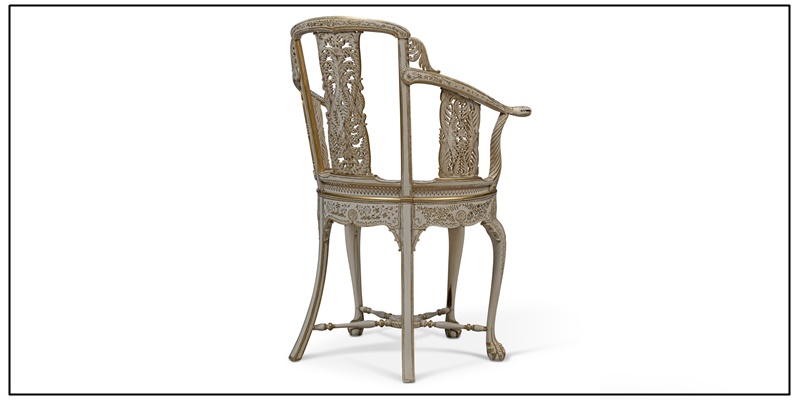Dr Amin Jaffer, the expert on Indian arts and furniture, currently working at Christie’s holds forth in a conversation below. The chair above is a fine work of craftsmanship and amalgamation of Eastern and Western aesthetics in the eighteenth century India. The chair was presented to the infamous Warren Hastings by the female Rani (ruler) of Murshidabad. Amazing that it survives…
we’re very lucky to have found a group of correspondence relating to Warren Hastings and the ruler of Murshidabad, the old princely capital of the state of Bengal and she was the regent, she was called Mani Begum, who was originally a dancing girl and she married the Nawab and when the Nawab died and there was a sort of power vacuum, Warren Hastings installed her as the regent and she thanks Hastings and his wife Marion by giving them, over a number of years, pieces of very, very high quality ivory furniture.
And when Hastings comes back to England, it’s his agent in Calcutta who’s transacting the shipping of the furniture and Hastings asks him repeatedly to give letters to the Begum to thank her or to tell her how fantastic the furniture looks in the house in Dalesford – Warren Hastings’ great house which he built in the Cotswolds and that’s how we really know that this piece, one of a pair, belonged to this great important commission.
c- all sorts of things were used by Indian princes, so there was very much a tradition of very, very high level ivory carving. The great leap is for the craftsmen to apply their skill to the production of a totally different form and one that’s quite challenging, because of course, a piece of furniture also has a function – it’s got to stand.
Is it true that Warren Hastings returns, where eventually he’ll be impeached for his supposed poor behaviour in India, he returns and the Begum continues to send him these wonderful objects but that some of them don’t actually reach him?
What’s very interesting is, that although Hastings was able to acquire these fairly simply, because of his rank, the thing is that when these chairs came back to Britain they caused an absolute sensation. Hastings gave a pair to Queen Charlotte and that began her life as a collector of ivory furniture from India and pieces like this were written about in the press as the richest and finest furniture that existed because of the ivory and the gold. The idea of having solid ivory furniture was seen as so remarkable and so over-luxurious – really truly exotic and it symbolised, I think, in Britain at the time, the richness of Asia, the richness of this land of spices and silk, of diamonds, in particular.
Read the full transcript at the Victoria and Albert Museum site
